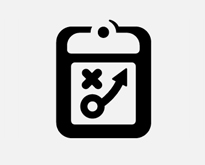Last Updated on February 28, 2024
This article covers developing a content plan for each post that you produce, as a singular post plan. There are five points that explain the importance of a content plan for individual posts. There are then six points that explain why it is important to have a content plan for your entire blog, which includes planning how all of your posts will be posted and how their themes and points may knit together.
1. Coherence
A planned blog post is far more likely to be coherent. Even a blog post that follows a bullet point list of planned ideas is still going to be more coherent than one that has no plan at all. The blog post will be more coherent because bloggers tend to ramble about a single point, and sometimes the post will consist of a long explanation of one point, followed by small descriptions of other points that they blogger wished to add.
A planned post will be more likely to dedicate similar word counts and attention to each point within the blog. This will make the blog easier to read and be a more effective means of information communication. The ideal blog post will make a point and make it as effectively as possible with as little fluff as possible. The information or argument must be concise and straight to the point.
2. Structure
The plan is the blueprint for your work, and the structure of your blog post is going to be greatly improved, even if you just follow a bullet pointed plan. Your plan should incorporate blog structure, even though the simple act of having a plan will automatically improve your blog post’s structure. If you incorporate structure into your plan then try to make it so that people can still get a very strong gist of your text, even if they only skim read the post.
3. Research
If you expose yourself to your blog posts meanings, arguments, points and notions before putting pen to paper (to coin the old phrase), you will find discover areas that need research. Doing this prior to writing will leave you better prepared to create a coherent and well-informed blog post.
4. Long winded
Planned blog posts are often far less long winded. When a writer has defined middle and endpoints, it becomes a little harder to be long winded about one subject or one point.
5. Easier to shorten
When you have a plan then you know in advance all of the points you need to make. When you subsequently shorten your blog post you will be able to see which points are superfluous. You will be able to see which planned points you actually hit and which points seem to have crept in unplanned.
[heading color=”black”]Importance of a Content Plan[/heading]

Image credit: karelnoppe / 123RF Stock Photo
Here are five ways in which a content plan is important for your blog posts. If for example you were releasing a narrative series of blog posts then obviously planning which post is released next is imperative. Here however are a few other reasons why the blog posts should be content planned.
1. A content plan is the most effective form of blog planning
Most bloggers have a rough idea of what blog post should come next and how it may relate to future and past blog posts. However, a content plan is the most effective way of planning your blog posts. Having your posts integrated into a plan leaves little room for error or blog post faux pas, such as disagreeing with your previous posts by accident.
2. Make sure you have all your required points
A series of blog posts on one issue is a good idea if you wish to gain repeat viewers. Those same loyal viewers will be very frustrated if your blog posts rehash old points or simply repeat things that were explained in previous posts. A blog content plan will help to stop this sort of silly mistake.
3. Structure posting to make your series easier to follow
Though using a content plan, you are able to ensure that your blog posts come out in an order that will facilitate an ease of understanding. For example you may wish to cover the basics of a topic and then build upon those topics into issues that are more complex. Even if people do not understand your later posts, they may look back at earlier posts and bring themselves up to speed.
4. You can create a yearning for the next post at the end of every post
A content plan can be manipulated to enable you to leave your viewer wanting to see next weeks/months post. Doing this would be impossible if you did not know what post was coming out next week.
5. Knowing what you intend to post is a good way of ensuring your posts knit together well
You will have to keep going over your old posts if you do not have a content plan.
6. Make sure that one post agrees with another.
A content plan is a good reminder of the points you have made in the past. If your newest post plans to disagree with an old post then you may need to explain why within the post, or delete the old post.
Check out our previous articles:
- Things to Consider When Hiring a Web Designer
- Important Elements to Consider in Custom Sticker Designing
- Case study: How to Deal with Visual Weight
- Designing Interesting Infographics – Tips and Tricks
- Developing a Mobile App: Factors That You Can’t (and Shouldn’t) Miss out on
We hope you found this article useful! Please don’t forget to subscribe to our RSS-feed or follow Inspirationfeed on Twitter, Google+, and Facebook! If you enjoyed the following article we humbly ask you to comment, and help us spread the word!

